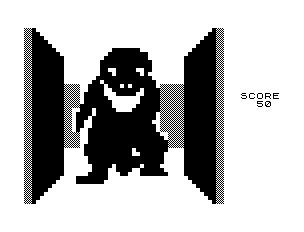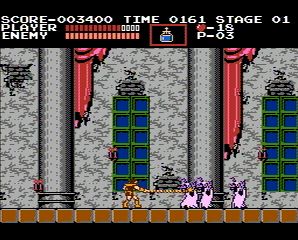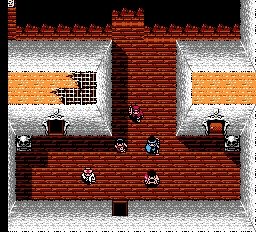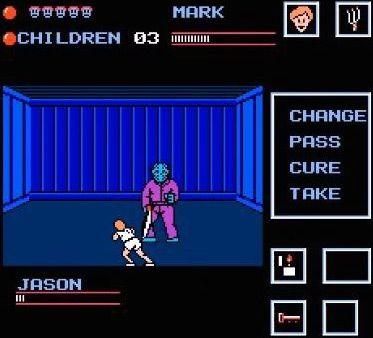
Video games as a medium are diverse and long-lasting, with something to offer everybody. From those obsessed with scores and bragging rights, to more relaxed individuals looking for an enthralling story with limited interaction, gamers who spend upwards of 100 hours in open worlds with random battles… and even the oddballs who just want to get the crap scared out of us.
In the era of Outlast and Five Nights at Freddy’s, horror games are perhaps more popular now than they’ve ever been. Even the experiences vary wildly, with Dead Space and Resident Evil offering up action alongside grotesque body horror, while Kholat and Layers of Fear focus on more cerebral scares and intriguing stories. YouTubers PewDiePie and Markiplier have made such games approachable to a larger audience, thanks to the comedic charm of their commentary and presentation — but to truly appreciate the booming horror genre, one must take a look back at its history.
Humble Beginnings
 Depending on who you ask, two different games are credited with kicking off the genre. 1982’s 3D Monster Maze, programmed by Malcolm Evans for the Sinclair ZX81, put players in the shoes of someone lost in a maze with a relentless T-Rex giving chase. The goal is to escape without being eaten, but there’s only one exit, and the entire search is done in a first-person perspective.
Depending on who you ask, two different games are credited with kicking off the genre. 1982’s 3D Monster Maze, programmed by Malcolm Evans for the Sinclair ZX81, put players in the shoes of someone lost in a maze with a relentless T-Rex giving chase. The goal is to escape without being eaten, but there’s only one exit, and the entire search is done in a first-person perspective.
The Atari 2600’s Haunted House (also from 1982) is more often credited with the invention of the horror genre. Played from a top-down perspective, players must navigate three floors (and a basement) of the titular haunted house while searching for pieces of an urn. Although the graphics are crude, with barely-discernible shapes and figures on the screen, many mainstay features of the genre were established here.
There are items scattered around the mansion to find: a key, a scepter, and the urn itself. Only one item could be carried at a time, thus starting the tradition of limited inventories. As you make your way through the game, there are also several enemies to avoid, such as a flapping bat, the leggy tarantula, and a spooky ghost. If you manage to dodge them, you still have to contend with the darkness of those cramped, endless corridors. A match can be lit as necessary to light your path, but its guiding embers only remain lit for so long. Later, even the walls become invisible unless cast in this fleeting glow. If you make it out with the full urn, victory is yours — and you live to see another day! Get hit nine times, however… and you merely become another poor soul lost to the mansion’s evils.
It’s all too easy to look at these early examples of horror games and laugh, because who could possibly be scared by such simple experiences? However, these games were revolutionary at the time, and even if they weren’t outright terrifying or overly hair-raising, gamers from the time will surely attest to the intensity both games instilled in them.
Precursors To Evil
 When 1986 rolled around, Konami’s Castlevania hit the scene on the Famicom, later re-released for the NES in 1987. Although Castlevania didn’t go out of its way to frighten players, the enemies and environments encountered were certainly evocative of Universal’s classic monster movies. Playing the role of Simon Belmont, gamers were charged with entering Dracula’s mystical castle and doing battle with Frankenstein, Igor, the Grim Reaper, and Medusa, alongside other recognizable beasts. What it lacked in scares, Castlevania certainly made up for with sheer charm. Humanity’s long history of spooky myths and legends could get no better love letter than this.
When 1986 rolled around, Konami’s Castlevania hit the scene on the Famicom, later re-released for the NES in 1987. Although Castlevania didn’t go out of its way to frighten players, the enemies and environments encountered were certainly evocative of Universal’s classic monster movies. Playing the role of Simon Belmont, gamers were charged with entering Dracula’s mystical castle and doing battle with Frankenstein, Igor, the Grim Reaper, and Medusa, alongside other recognizable beasts. What it lacked in scares, Castlevania certainly made up for with sheer charm. Humanity’s long history of spooky myths and legends could get no better love letter than this.
Shiryou Sensen: War of the Dead, released in 1987 for the MSX2, is the next notable horror game. Designed as an action-RPG with real-time battles, War of the Dead starred a green-haired SWAT member named Lila and had a greater emphasis on story. This title perhaps helped set the stage for later survival horror titles, most obviously the female-led Parasite Eve horror/RPG hybrid. War of the Dead also holds the distinction of introducing item storage crates to horror games — later used by mainstay series Resident Evil — and continued the tradition of limited inventory space first set by Haunted House.
 When peeking back at the history of the genre, however, one game in particular deserves the brightest spotlight — the Famicom’s Sweet Home, a companion to the 1989 film from which its name and plot derive. Developed by Capcom, this gem featured a group of documentarians who enter the long-abandoned Mamiya mansion. Trapped in that dilapidated house as evil envelops it, players must guide this eclectic group through every dangerous hall in hopes of defeating its inner demons.
When peeking back at the history of the genre, however, one game in particular deserves the brightest spotlight — the Famicom’s Sweet Home, a companion to the 1989 film from which its name and plot derive. Developed by Capcom, this gem featured a group of documentarians who enter the long-abandoned Mamiya mansion. Trapped in that dilapidated house as evil envelops it, players must guide this eclectic group through every dangerous hall in hopes of defeating its inner demons.
Numerous revolutionary ideas were introduced to the horror genre here, while Sweet Home also incorporated long-established ideas to form a spectacularly challenging RPG experience. This hybrid of concepts would inspire the creation of similarly ambitious titles, ranging from the original Resident Evil, to the lesser-known (and appropriately titled) Obscure.
Each of the five playable characters have their own unique ability (such as Akiko’s healing) or item (like Kazuo’s lighter), all of which are necessary to achieve victory. The catch is devilishly brilliant, as players eventually discover the permanence of death, because fallen characters cannot be revived. Stakes in the digital realm don’t get higher than that, and every randomly-encountered battle is both terrifying and unbelievably stressful as a result. In fact, survival horror enthusiasts often argue that this title truly marked the birth of the genre, though Resident Evil coined the phrase much later.
Sweet Home’s storytelling would also resonate with gamers and developers alike, as its reliance on scattered notes and diary entries immersed everyone in the tragic lore of the Mamiya mansion. This began a trend which continued on into many games and series established afterward, and to this day many titles, like Layers of Fear make use of this idea.
However, it would be a shame to overlook an already oft-forgotten title — 1989’s Project Firestart, a side-scroller for the Commodore 64. Released in the same year as Sweet Home, this title rarely gets the credit it deserves for pioneering many of the same themes and mechanics tackled by its peer — and a few of its own.
More than anything, it focused on an engrossing story, and even the intro is ridiculously cinematic for a game of its time. Once in-game, lead character Jon could happen across terminals with recorded journals and notes to further its deep backstory. Although the concept is similar to Sweet Home’s notes, Project Firestart’s sci-fi setting aboard the research ship Prometheus helped to differentiate it. Frequent cutscenes also lent a nice flair to the experience as a whole, momentarily distracting from minute-to-minute terror. As Jon, your unnerving vulnerability and limited ammunition kept stress high at all times, even when the rampant monsters and mutants weren’t present on-screen. While traversing the hellish depths of Prometheus, dynamic music would ramp up the tension at ingenious intervals to drive fear into the player’s core. When viewed through a modern lens, it’s very easy to label this as a very clear forerunner to Visceral Games’ Dead Space.
 Alas, not every game has such effort put into it. As we’ve now reached 1989, when some seriously kick-ass titles were released, I would be remiss to gloss over one of the biggest stinkers. While Japan was exclusively granted access to Sweet Home and its wonderfully crafted gameplay, North America received a licensed nightmare of its own — Friday the 13th.
Alas, not every game has such effort put into it. As we’ve now reached 1989, when some seriously kick-ass titles were released, I would be remiss to gloss over one of the biggest stinkers. While Japan was exclusively granted access to Sweet Home and its wonderfully crafted gameplay, North America received a licensed nightmare of its own — Friday the 13th.
Set in the blood-soaked grounds of Camp Crystal Lake from the Friday the 13th film series, the game promised to replicate the sheer terror of those movies… and, like it or not, the results are truly memorable. Placed in the sneakers of a befuddled camp counselor, players were set to tango with iconic villain Jason Voorhees… as well as inexplicably present zombies, wolves, and demonic crows. Mrs. Voorhees was also changed into a Medusa-esque floating head. When imagining the initial pitch, I can almost hear an indifferent programmer shout, “Ehh, why not!”
Some of the ideas weren’t necessarily bad, such as having to listen for the screams of fellow counselors and immediately rush to their rescue. Intermittently running into Jason could have also led to thrilling moments and thrown controllers, but the gameplay mechanics just weren’t up to snuff. The ridiculously bright, vibrant color palette also didn’t do it any favors — especially when Jason himself was the same violet shade as Barney the Dinosaur.
Don’t even get me started on other licensed games of the era like A Nightmare on Elm Street, The Evil Dead, and Halloween!
A Look Ahead
As you can see, the horror genre was rich with great and varied experiences from the very beginning, aside from a few bad eggs. Unfortunately, these titles remained a niche attraction for many years — mirroring their close relatives in the film world — leading many of them to go ignored by the wider audience. Even so, these early steps helped to refine horror in video games until a time when technology enabled a thrilling evolution.
Come back again soon for the second part, where we’ll discuss heavy hitters like Resident Evil and Silent Hill, while also tracing their influences to the current gaming landscape.
UPDATE: Part Two of “It’s In Your Blood: A History of Horror Games” is now available!







